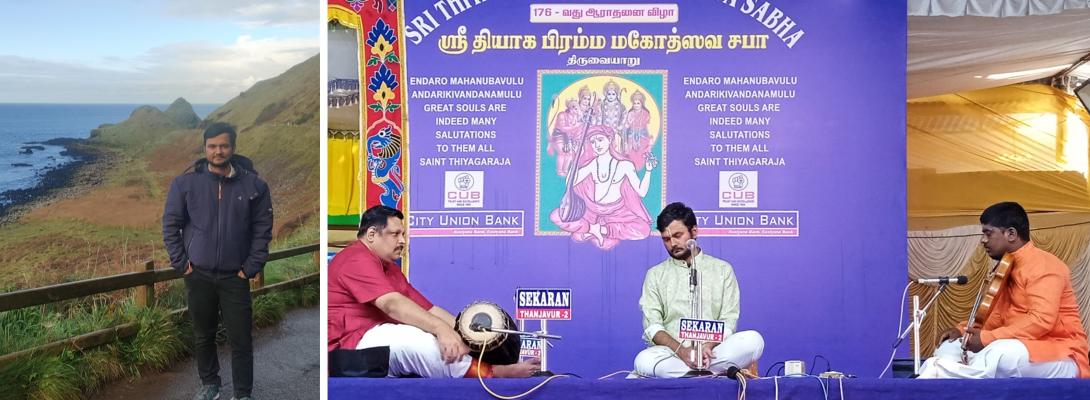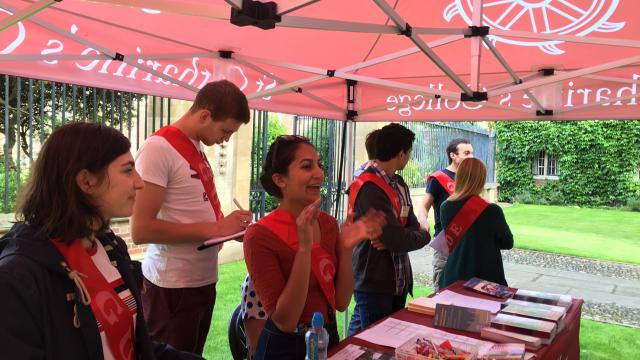Name: Ramachandra Kannan
Hometown: Thanjavur, Tamil Nadu, India
Extracurricular interests: Trained vocalist in Indian classical music, watching movies
Postgraduate degree: PhD in Engineering
Life before Catz
“Rockets never failed to fascinate me as a child! This interest stuck with me throughout my higher education and narrowed down to the area of fluid mechanics and specifically to compressible flows and heat transfer. During my undergraduate degree in Mechanical Engineering at PSG College of Technology in Tamil Nadu, I even visited the launch pad for rockets leaving India for space. I then embarked on a research-based Master’s degree in experimental aerodynamics with the Indian Institute of Technology (IIT) Madras. This experience convinced me that I want to be an experimentalist, who continues to look at various aspects of nature and tries to understand it to the finest extent possible, and develop systems that would benefit wider society.”
Life at Catz
“At the IIT Madras, I was fortunate to hear how highly Prof. Nagabhushana Rao Vadlamani (Junior Research Fellow 2015–18) thought of Catz from his time as the Bowring Research Fellow. His personal recommendation, along with the College’s strong links to the Harding Distinguished Postgraduate Scholars Programme, convinced me to apply.
“Catz is not a large College but it boasts a wide range of facilities, including a purpose-built music room were I practice regularly. The MCR Committee that represents the postgraduate community here played a big role in helping me find my place and organised a long list of events during Freshers’ Week. Joining the diverse range of students and academics at Catz inspires and motivates me.”
Postgraduate studies
“My PhD research will investigate flow separation and unsteadiness due to a phenomenon called Shock-Boundary Layer Interaction (SBLI). High-speed air flows are generally associated with the occurrence of strong compression waves called shock waves. These shocks are responsible for directing the flow past the high-speed aircrafts, as well as meeting the pressure conditions. When this shock interacts with the low momentum fluid close to any wall surface (called a boundary layer), it imposes an adverse pressure gradient, thus resulting in a local reversal of flow in the region of interaction. The flow separation results in increased drag and flow field unsteadiness, imposing fluctuating loads on the system. SBLIs occur in high-speed engine intakes, aircraft control surfaces etc., where they can even result in catastrophic system failure. My research aims to study the flow physics associated with the separation due to such SBLIs, including a detailed analysis on the associated unsteadiness using wind tunnel experiments.”
The Harding Distinguished Postgraduate Scholars Programme
“It is exciting how broad the programme is, given the different subjects and backgrounds of all the scholars. We all come together at regular social events, and a favourite from my first term was visiting the Christmas light display at the University’s Botanic Garden. The personal research allowance is generous and useful, which I have already used to buy a new laptop and will cover the costs of attending international conferences like the American Institute of Aeronautics and Astronautics’ SciTech Forum.”
Advice for undergraduates thinking of applying for postgraduate studies
“As an international student, the application processes can be quite lengthy. All you can do is try your best and try not to let anxiety get the better of you. I’d recommend concentrating any personal statements on the relevance of your work to the wider world; I’m interested in fundamental science but I hope my work will ultimately help to increase efficiency and safety of high-speed aircrafts.”






